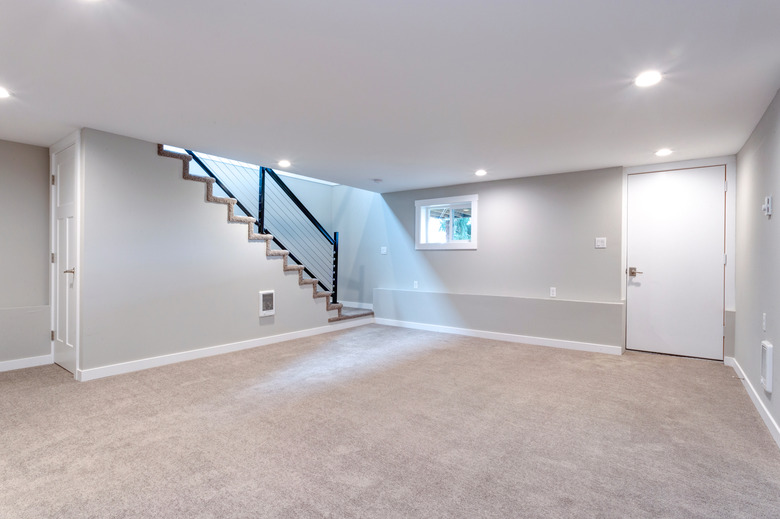How Much Does A Radon Mitigation System Cost?
We may receive a commission on purchases made from links.
If you're wondering what a radon mitigation system might cost, perhaps you have already determined that your home has a radon gas problem. Or maybe you've recently learned that a neighbor discovered high levels of radon gas in his home and you're wondering if yours might have high levels too. Once you know for sure, you have options for radon mitigation systems.
Tip
A radon mitigation system typically costs between $800 and $3,000, depending on your specific needs and variables in your home.
Testing for Radon
Testing for Radon
One of the first steps is testing for radon to see if you need a mitigation system. Simple tests for the presence of radon are available at hardware and home improvement retailers, online and sometimes from local government sources. The radon tests take several forms.
The least expensive and quickest (and consequently least precise) type of radon detector is the charcoal canister. A charcoal canister test will cost from $10 to $30. Testing for radon with a charcoal canister detector entails placing the detector in a lower room of your house—a basement perhaps—and leaving it undisturbed for a specific length of time. The canister then gets sent to a laboratory for analysis.
You can also have professional radon testing done. This option costs between $150 and $800.
What Causes the Radon?
What Causes the Radon?
Radon is emitted when radioactive uranium, commonly present in soils and in the bedrock and groundwater, decays and releases the gas. The radon gas makes its way to the surface where it mixes with the air and dissipates.
Where a house foundation traps the radon and prevents it from dispersing, the radon gas collects and the pressure of the accumulated gas forces it to find entry points into the house. Typical points of entry for radon gas are cracks in the foundation, gaps around pipes and sump pump basins. Sealing those, while unlikely to completely solve the problem, is cost effective and the first step in getting your radon levels under control.
Taking Action Against Radon
Taking Action Against Radon
Once you have the results of your preliminary radon test, it's time to consult a radon mitigation professional. Your state radon office can provide you with a list of qualified contractors. Solving your radon contamination problem depends on a proper assessment of the contributing factors — whether your home has a basement or a crawl space or is built on a slab, the soil beneath, the presence or not of a sump system, and so on. Identifying the measures appropriate for your circumstance is the first step in reaching that solution.
Radon Mitigation Systems
Radon Mitigation Systems
The basic strategy for radon reduction is known as "active soil depressurization." The idea is to draw the radon from the soil beneath your home before it can enter. To accomplish this, a hole is made in your basement floor and a cavity produced beneath, where radon can be collected and vented through a pipe that passes outside and up the exterior wall or upwards inside the house and through the roof. If your home has a sump system, the sump basin can serve as the radon collection point and the radon vented from there.
A qualified radon mitigation professional has the experience and knowledge to assess your situation and to provide you with a plan of action and an estimate of the cost. It's worthwhile to get an assessment and estimate from several professionals. Because circumstances are so variable, the cost of a radon reduction system can range from approximately $800 to $3,000. The average cost is about $1,200 to $1,500.
With a professional certified installer, you are assured of a system that conforms to established standards and performs satisfactorily. Be wary of uncertified installers who offer a mitigation system at cut rates. Unless you are confident of the quality of the materials and the workmanship you will receive and that the price quoted is all-inclusive, you may find that, ultimately, the certified professional offers the best bargain.
Installing Your Own System
Installing Your Own System
If you have sufficient skill and the right tools, it's possible to install a radon reduction system yourself. Doing so could save as much as $1,000. Several online articles and videos offer instruction on the process. Not every instruction, however, conforms to industry and regulatory standards, and there's no guarantee that the system portrayed in those instructions will be the appropriate one for your house or that it will successfully bring the radon in your home to a safe level.
Monitoring Your Radon Levels
Monitoring Your Radon Levels
Once your radon problem is solved, you'll want to be able to continuously monitor it. Equipment failure or other changes could allow the radon levels to creep up again. There are many factors affecting radon readings during testing or monitoring, such as the monitor location, weather and ventilation. As part of the professionally installed system, you should expect a permanent, continuous radon monitor to be included.
If you have installed the system yourself and need to choose a radon monitor, several styles are available online. Prices range from about $150 to $250. Some are equipped with an alarm to alert you should radon levels rise. Others can be accessed remotely via smartphone.
